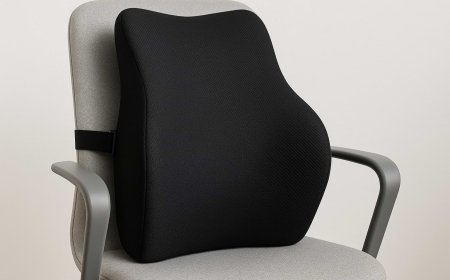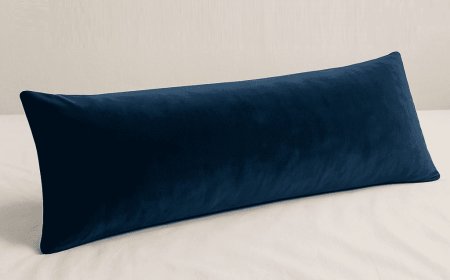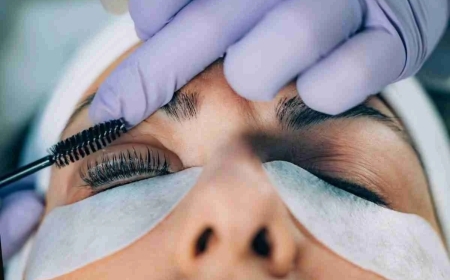Reformer Pilates Research: Proven Benefits for Rehabilitation and Recovery
Ongoing studies are delving deeper into how Reformer Pilates can benefit problems like chronic pain, neurological conditions, and even psychological well-being.
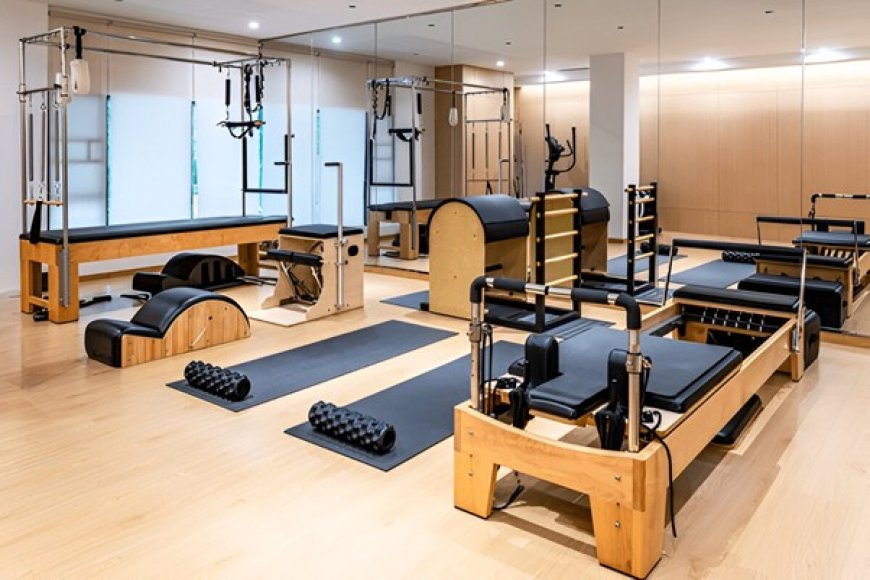
Have you ever wondered if theres a low-impact, versatile workout that could help you recover from injuries while improving your overall strength? Are you looking for an exercise approach that makes you feel supported, challenged, and motivated at the same time? If so, then Reformer Pilates might be exactly what you need. This practice has evolved to become a go-to option in many Australian physiotherapy clinics and rehabilitation centres, thanks to its focus on controlled movements, alignment, and core stability.
In this article, well explore how Reformer Pilates can boost your journey through rehabilitation or recovery, drawing on insights from clinical research and real-life success stories. Youll learn about the unique features of Reformer Pilates, how it differs from traditional Pilates, and why its becoming increasingly popular for people of all ages in Australia. Plus, well break down the role of Clinical Pilates, offer practical tips for getting started safely, and show you how to stay motivated for the long haul.
By the time you finish reading, youll have a thorough understanding of the many benefits of Pilatesparticularly when it comes to injury recovery, pain relief, and improved flexibility. Well also address common questions, such as whether Reformer Pilates can replace the gym or help with chronic pain. Lets dive in and unlock the potential of this exciting method so you can reclaim an active, fulfilling lifestyle and keep your body feeling strong and resilient.
Introduction
Reformer Pilates revolves around using a specialised machine called the Reformer. At first glance, it can appear a little complicated, with its sliding carriage, springs, and adjustable bars. However, once you step onto it, youll discover an adaptable and user-friendly way to enhance your strength, flexibility, and posture. This approach is ideal for those looking for a gentle yet impactful workout, making it a top choice in rehabilitation and recovery programmes across Australia.
Defining Reformer Pilates for Rehabilitation
Reformer Pilates for rehabilitation focuses on careful, controlled exercises tailored to suit specific injuries or mobility challenges. By adjusting the spring tension and using different attachments, physiotherapists and certified instructors can customise workouts to meet individual needs. Unlike more strenuous routines, this format minimises stress on joints, making it an excellent option for anyone dealing with low-back pain, knee issues, or other biomechanical concerns. Youll often hear terms like core activation or neutral alignment thrown around, but these simply refer to making sure your muscles and joints are functioning in harmony. The end result? A gentler form of exercise that helps with injury recovery while promoting long-term benefits of Pilates for overall fitness.
Reformer Pilates Is Gaining Popularity in Australia
Australians love being active, whether its surfing on the Gold Coast or enjoying weekend hikes in the Blue Mountains. But with an increase in sports participation and busy lifestyles, theres also been an uptick in exercise-related injuries. Reformer Pilates has become a favourite because it allows people to stay active without worsening existing conditions. Many physiotherapy clinics in Sydney, Melbourne, and across regional areas now offer Reformer Pilates classes tailored towards rehabilitation. This trend reflects a growing recognition of its capacity to support healing and bolster core strength, with minimal impact on sensitive joints.
Understanding Clinical Pilates
Clinical Pilates is a specialised branch of Pilates led by qualified health professionals, often physiotherapists. While regular Pilates classes can certainly help improve fitness, Clinical Pilates aims to address medical and rehabilitation needs. This approach emphasises assessment, ongoing evaluation, and highly individualised exercise prescriptions.
Key Differences Between Clinical and Traditional Pilates
Traditional Pilates typically involves group classes, standard sequences, and minimal one-to-one customisation. The teacher might correct your form, but the routines are generally the same for most participants. Meanwhile, Clinical Pilates sessions begin with a personalised assessment carried out by a healthcare expert who understands your injury history, physical limitations, and treatment goals. Exercises are then adapted to focus on problem areas such as weak muscles, postural imbalances, or restricted range of motion. This level of customisation is a core reason Clinical Pilates is a go-to method for injury recovery.
Clinical Pilates Benefits Injury Recovery
When youre during rehabilitation, the last thing you want is a workout that surpasses your bodys limits. Clinical Pilates ensures each movement is safe, targets the correct muscles, and progresses at a steady rate. This can be a game-changer if youre dealing with stubborn back pain, recovering from shoulder surgery, or managing chronic conditions like arthritis. By gradually introducing more challenging exercises, you can continue to improve without risking additional damage or setbacks. In many cases, Clinical Pilates works hand in hand with other treatments, such as manual therapy or acupuncture, forming an all-inclusive approach that supports a faster, more sustainable recovery.
The Science Behind Reformer Pilates
You might wonder why Reformer Pilates is so effective compared to many other workouts. The answer lies in its core principles, which revolve around balanced muscle development, precise movement patterns, and a deep focus on body awareness. These principles resonate strongly with classical fitness and health concepts, reminding us that quality of movement often matters just as much as quantity.
Core Principles Supporting Classical Fitness and Health
One of the main strengths of Reformer Pilates is how seamlessly it integrates key elements of human movement. Each session emphasises breathing control, core muscle engagement, coordinated limb movement, and overall body alignment. Think of it as a tune-up for your movement system: you learn to activate stabilising muscles in the lower back and pelvis, which helps to protect against future injury. Over time, this leads to better balance, posture, and endurancegains that align beautifully with classical fitness and health philosophies. Instead of mindlessly pushing or pulling heavy loads, you focus on mindful movement that truly challenges and refines your body mechanics.
Research Studies on Reformer Pilates Effectiveness
Numerous studies have explored the benefits of clinical Pilates, especially in relation to back pain, injury recovery, and enhanced muscle function. Several Australian universities have conducted trials that support Reformer Pilates as a safe, effective method to boost strength in core stabiliser muscles, improve flexibility, and reduce pain levels. These findings align with real-world experiences from physiotherapy clinics across the country, where Reformer Pilates is often used to complement other rehabilitation strategies. When combined with a personalised approach, these research-backed techniques can hasten recovery while minimising the risk of re-injury.
Proven Benefits of Reformer Pilates in Rehabilitation
At this point, you might be asking what exact benefits Reformer Pilates can bring to your rehabilitation. Lets look at some of the outcomes you can anticipate when you make Reformer Pilates part of your recovery plan.
Enhanced Core Strength and Stability
Core strength is often the foundation of a healthy, pain-free body. The various spring tensions on a Reformer carriage challenge your core in ways that typical exercise machines cannot match. Every exercise demands you engage your deep abdominal muscles, obliques, and lower back stabilisers. As a result, you develop a stable trunk that protects the spine and helps distribute load more evenly throughout your body. Over time, a stronger core makes daily tasks feel easier, whether thats lifting shopping bags or carrying a child.
Improved Flexibility and Posture
Poor posture can often be traced back to tight muscles, imbalances, or repetitive strain from daily routines. Reformer Pilates addresses these issues by extending and elongating muscles through a guided range of motion. For instance, exercises like the Long Stretch or the Elephant encourage controlled stretching of hamstrings, hip flexors, and other notoriously tight muscle groups. As your flexibility improves, youll notice you can sit or stand taller without forcing it. This natural improvement in posture goes a long way in preventing discomfort in the neck, shoulders, and back.
Reduced Pain and Faster Recovery
Injury pain often comes from muscle imbalances or restricted movement patterns. Reformer Pilates encourages balanced activation around each joint, which helps alleviate tension that can lead to discomfort. Plus, the Reformers adjustable settings allow you to gently reintroduce movement to an injured area without placing excessive stress on damaged tissues. Many people report feeling less pain after just a few sessions, coupled with an improved capacity to perform daily activities. As your range of motion returns, youll also regain confidence, which is a big factor in effective long-term rehabilitation.
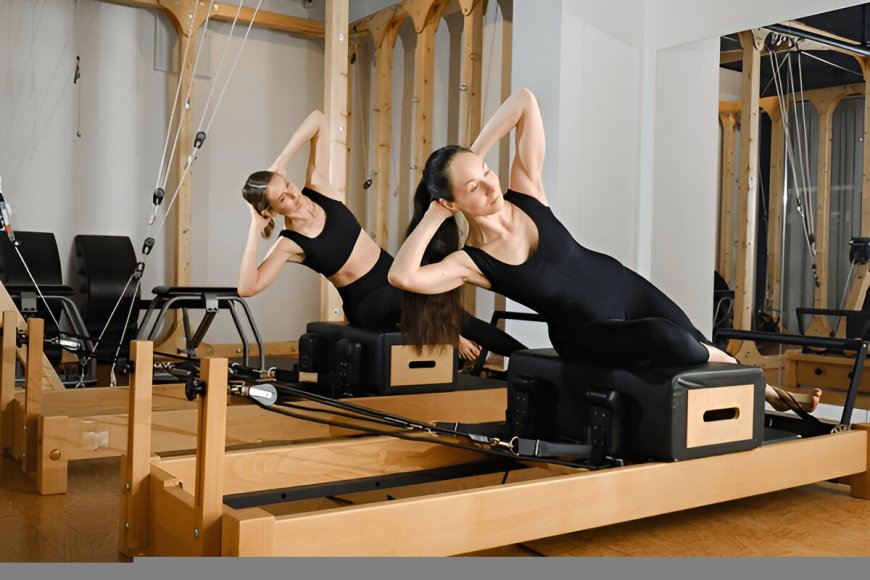
Reformer Pilates vs. Traditional Exercise Methods
Reformer Pilates is growing in popularity, but how does it measure up to more traditional exercise routines such as weightlifting, cardio machines, or high-intensity interval training?
Reformer Pilates Complements Other Fitness Programs
When you consider pilates rehabilitation in the broader fitness context, Reformer Pilates can be an excellent complement. It focuses on alignment, movement precision, and muscular endurance rather than only chasing big numbers or explosive exercises. Using Reformer Pilates alongside other workouts such as swimming, cycling, or weightlifting can promote a more balanced strength profile by targeting smaller stabilising muscles. Moreover, Reformer Pilates can serve as a low-impact recovery session between higher-intensity training days. This balanced approach reduces the chance of overuse injuries and helps your body maintain a healthy equilibrium.
Advantages for Long-Term Physical Health
Sustainability is often overlooked when people choose their exercise routines. Yet, its absolutely key for long-term well-being. One major advantage of Reformer Pilates is that its appropriate for a range of fitness levelsbeginners and seasoned athletes alike. As you progress, the adjustable spring tension ensures you always have room to grow. Contrast this with high-impact sports, where the risk of wear and tear rises as you intensify your workouts. Thanks to the Reformers adaptability, you can continue to participate in these sessions well into older age, protecting your joints and staying active in the process.
Practical Applications for Injury Recovery
When it comes to Pilates for injury recovery, what kind of injuries can Reformer Pilates address, and how do rehabilitation professionals implement it?
Common Injuries Addressed by Reformer Pilates
Reformer Pilates is effective for a variety of injuries, ranging from sports-related strains and sprains to chronic back pain. Athletes often rely on it to assist with ACL (anterior cruciate ligament) rehab, while office workers might use it to relieve neck or shoulder tension. Because its low impact, its also suitable for people with arthritis or osteoporosis who want a safe way to stay active. Each exercise can be precisely calibrated, ensuring the healing tissue isnt overloaded while still engaging in beneficial movement.
Post-Surgical Rehabilitation Strategies
Whether youve had hip replacement surgery, rotator cuff repair, or spinal fusion, movement can feel daunting in your post-surgical journey. Reformer Pilates allows you to reintroduce gentle, controlled motion under guided supervision. Therapists often select exercises that encourage gradual weight-bearing and range of motion while minimising pain. This steady progression supports tendon and ligament healing, reduces scar tissue formation, and helps maintain joint mobility.
Getting Started with Pilates Rehabilitation
Embarking on a Pilates rehabilitation journey can feel a bit intimidating at first. But with the right guidance and a set of realistic goals, youll soon be well on your way to improved function and comfort.
Finding a Qualified Instructor or Physiotherapist
Finding the right instructor is essential. Look for someone with proven experience in Clinical Pilates or physiotherapy, especially if you have specific injuries that need attention. Many Australian clinics now offer one-to-one or small-group Reformer classes, ensuring close supervision. Checking reviews, seeking recommendations from friends, or asking your GP for a referral are great ways to locate a qualified professional.
Setting Realistic Goals and Expectations
Its normal to want quick fixes, particularly if youve been in pain for a while. But injury recovery seldom happens overnight. Start by marking short-term targets, like improving joint range of motion or pain levels, and build towards long-term goals, such as returning to running or participating fully in social sports. Keeping your expectations realistic will help you stay patient and consistent.
Tracking Progress and Staying Motivated
Monitoring your improvements can supercharge your motivation. Whether its using a journal, an app, or periodic assessments at your clinic, tracking small wins shows you just how far youve come. Celebrate every step forward, whether its completing a slightly tougher exercise or noticing reduced soreness in the morning. The more you stay connected to your progress, the easier it becomes to keep pushing forward.
Tips for Ongoing Success
Reformer Pilates can be a powerful catalyst for physical change, but the real magic often happens when you pair it with other healthy practices. Staying consistent, cross training sensibly, and maintaining balanced lifestyle habits are all key to locking in your newfound strength and resilience.
Combining Reformer Pilates with Other Activities
While Reformer Pilates stands on its own, combining it with other forms of exercise can speed up your gains. Low-impact activities like swimming or gentle yoga can provide additional mobility work, while light strength training in the gym might help you develop a well-rounded physique. By mixing and matching these workouts carefully, youll give your body diverse challenges, which helps prevent plateauing and keeps your routine fresh.
Maintaining a Balanced Lifestyle
Beyond movement, a balanced lifestyle supports better rehabilitation and overall health. Consider how factors like nutrition, sleep quality, and stress management influence your physical condition. An anti-inflammatory diet rich in whole foods can support tissue healing, while proper sleep helps muscles recover. Dont forget mental health eithermindfulness practices like meditation or breathing exercises can help reduce tension and improve focus during Pilates sessions. By looking after mind and body alike, youll enhance the full spectrum of Pilates benefits reformer exercises can offer.
Conclusion
Recap of Reformer Pilates Benefits for Recovery
Summing up all the insights weve explored, its clear that reformer Pilates research can be a powerful method for injury recovery and rehabilitation. Its adaptable design offers a safe, controlled environment for rebuilding strength, enhancing flexibility, and correcting postural imbalances. Those dealing with shoulder, knee, back, or hip problems often find relief because the Reformer lets them guide their bodies through gentle yet progressive exercises. This makes it an excellent companion to other treatments, ensuring you can regain independence and confidence faster.
Future Directions in Pilates Research and Practice
Ongoing studies are delving deeper into how Reformer Pilates can benefit problems like chronic pain, neurological conditions, and even psychological well-being. Many experts predict that Clinical Pilates will continue to evolve, blending modern rehab technology with advanced movement science. As more practitioners discover new ways to target specific muscles and adapt routines for unique conditions, the scope of Pilates rehabilitation will only expand. Australia remains at the forefront of this movement, with physiotherapists collaborating and sharing fresh discoveries that keep the Pilates approach cutting-edge.
Encouragement to Begin Your Own Reformer Pilates Journey
If youve been contemplating a fresh start for your fitness or need a supportive method to aid in your healing process, Reformer Pilates might be the solution youve been hoping for. Its low-impact design makes it accessible, and its challenging yet manageable framework catalyses real, lasting change. By setting clear goals, working with knowledgeable professionals, and monitoring your progress, youll likely discover your body feeling stronger, more flexible, and better aligned than it has in years. Why not give it a try and see how it can transform your journey toward robust health? Everybody is different, but countless Australians have found new vitality through Reformer Pilates theres a good chance youll be next!





































